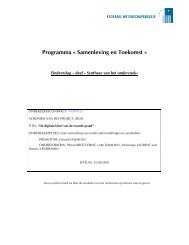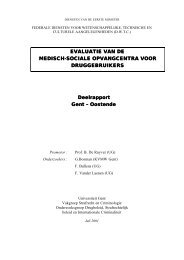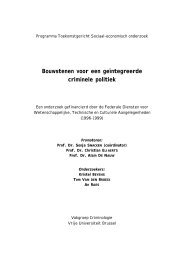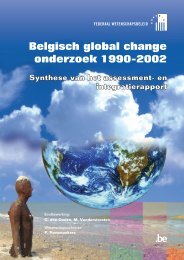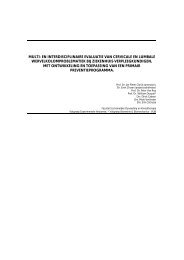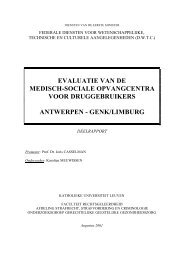chapter 3 inventory of local food systems
chapter 3 inventory of local food systems
chapter 3 inventory of local food systems
You also want an ePaper? Increase the reach of your titles
YUMPU automatically turns print PDFs into web optimized ePapers that Google loves.
Project CP/59 - “Instruments and institutions to develop <strong>local</strong> <strong>food</strong> <strong>systems</strong>”<br />
Since only limited information was available for the MFS and only a rough idea on<br />
employment on farm level due to marketing activities within the LFS was formed and no<br />
numerical comparison <strong>of</strong> the effect on employment was concluded upon. In this regard,<br />
there is a noticeable request on producer-level to provide a uniform, simple and clear<br />
tool to keep track <strong>of</strong> time and job-investment related to different activities on place.<br />
In the mainstream supply chain, those activities are not conducted on farm level, but are<br />
taken up by processing and distribution bodies. In the latter case, employment tends to<br />
be centralised in limited regions, withdrawing employment from the <strong>local</strong>ity. Only<br />
limited information was available for the MFS. Combined with the rough idea on<br />
employment on farm level due to marketing activities within the LFS, no numerical<br />
comparison <strong>of</strong> the effect on employment was concluded upon.<br />
One could use statistical data (as opposed to our case study approach) in order to<br />
quantify the comparison. However, statistics do not exist for LFS, in part because <strong>of</strong> the<br />
former mentioned lack <strong>of</strong> a uniform system for data gathering. However, also when<br />
these data are available, a descriptive analysis <strong>of</strong> employment, especially for the<br />
comparison on farm level remains valuable, both to stress differences and similarities,<br />
and to underline the meaning <strong>of</strong> different aspects <strong>of</strong> farm employment.<br />
For further research on the impact <strong>of</strong> employment <strong>of</strong> <strong>food</strong> <strong>systems</strong> (and other economic<br />
activities) we want to suggest always to integrate a descriptive analysis <strong>of</strong> the<br />
employment effect in combination with numerical data. The basic underlying reason is<br />
the different involved aspects: social employment, flexible employment, education<br />
tasks: they can be described in a structured way to provide a basis for comparison <strong>of</strong><br />
different <strong>systems</strong>.<br />
2.3.3. Economic indicator III: Absolute price differences on producer and consumer<br />
level<br />
A third economic indicator is the absolute differences in actual prices received by the<br />
producer at the one hand and paid by the consumer at the other hand compared for<br />
different <strong>food</strong> <strong>systems</strong>. The price a producer receives optimally covers production costs<br />
while allowing the producer to earn a living with it. The underlying hypothesis when we<br />
compare the prices to producers in both LFS and MFS is that there is a possible<br />
difference in this prices between the studied <strong>systems</strong>. Prices to the consumer optimally<br />
cover the production costs, complemented with processing and marketing costs, which<br />
include a pr<strong>of</strong>it share <strong>of</strong> each involved party. Also here the hypthesis is that those prices<br />
differ between LFS and MFS.<br />
The comparisons in our study are based on data provided by the producers (in both<br />
chains) at one hand, and both producers (in the LFS) and own observation <strong>of</strong><br />
supermarket prices in June 2005 and September 2005 (due to a lack <strong>of</strong> data availability<br />
in the MFS). The observed supermarket prices are combined with statistical (GfK) data<br />
on product prices. Figure 1 and 2 show the absolute differences for LFS and MFS in<br />
price to producer at one hand and price to consumer at the other hand, per selected<br />
<strong>food</strong> item.<br />
SPSD II - Part I - Sustainable production and consumption patterns - Agro-Food 31



